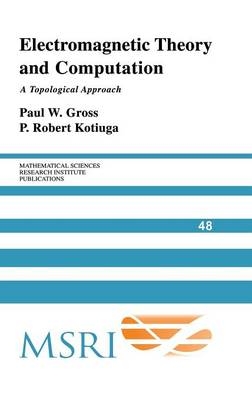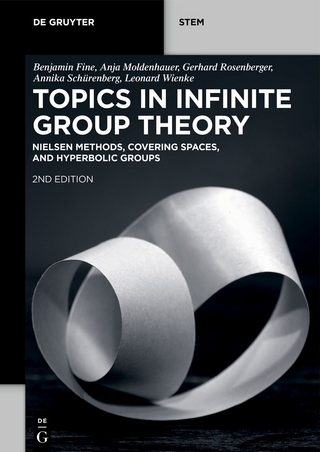
Electromagnetic Theory and Computation
A Topological Approach
Seiten
2004
Cambridge University Press (Verlag)
978-0-521-80160-7 (ISBN)
Cambridge University Press (Verlag)
978-0-521-80160-7 (ISBN)
This book explores the connection between algebraic structures in topology and computational methods for 3-dimensional electric and magnetic field computation. Although a connection between topology and electromagnetism has been known since the 1800s, there has been very little exposition of it. This book takes steps to close that gap.
Although topology was recognized by Gauss and Maxwell to play a pivotal role in the formulation of electromagnetic boundary value problems, it is a largely unexploited tool for field computation. The development of algebraic topology since Maxwell provides a framework for linking data structures, algorithms, and computation to topological aspects of three-dimensional electromagnetic boundary value problems. This book attempts to expose the link between Maxwell and a modern approach to algorithms. The first chapters lay out the relevant facts about homology and cohomology, stressing their interpretations in electromagnetism. These topological structures are subsequently tied to variational formulations in electromagnetics, the finite element method, algorithms, and certain aspects of numerical linear algebra. A recurring theme is the formulation of and algorithms for the problem of making branch cuts for computing magnetic scalar potentials and eddy currents.
Although topology was recognized by Gauss and Maxwell to play a pivotal role in the formulation of electromagnetic boundary value problems, it is a largely unexploited tool for field computation. The development of algebraic topology since Maxwell provides a framework for linking data structures, algorithms, and computation to topological aspects of three-dimensional electromagnetic boundary value problems. This book attempts to expose the link between Maxwell and a modern approach to algorithms. The first chapters lay out the relevant facts about homology and cohomology, stressing their interpretations in electromagnetism. These topological structures are subsequently tied to variational formulations in electromagnetics, the finite element method, algorithms, and certain aspects of numerical linear algebra. A recurring theme is the formulation of and algorithms for the problem of making branch cuts for computing magnetic scalar potentials and eddy currents.
1. From vector calculus to algebraic topology; 2. Quasistatic electromagnetic fields; 3. Duality theorems for manifolds with boundary; 4. The finite element method and data structures; 5. Computing eddy currents on thin conductors with scalar potentials; 6. An algorithm to make cuts for magnetic scalar potentials; 7. A paradigm problem.
| Erscheint lt. Verlag | 14.6.2004 |
|---|---|
| Reihe/Serie | Mathematical Sciences Research Institute Publications |
| Verlagsort | Cambridge |
| Sprache | englisch |
| Maße | 156 x 234 mm |
| Gewicht | 580 g |
| Themenwelt | Mathematik / Informatik ► Mathematik ► Geometrie / Topologie |
| Naturwissenschaften ► Physik / Astronomie ► Elektrodynamik | |
| Technik ► Elektrotechnik / Energietechnik | |
| ISBN-10 | 0-521-80160-5 / 0521801605 |
| ISBN-13 | 978-0-521-80160-7 / 9780521801607 |
| Zustand | Neuware |
| Haben Sie eine Frage zum Produkt? |
Mehr entdecken
aus dem Bereich
aus dem Bereich
Gekrümmte Kurven und Flächen
Buch | Softcover (2024)
De Gruyter (Verlag)
CHF 76,90
Nielsen Methods, Covering Spaces, and Hyperbolic Groups
Buch | Softcover (2024)
De Gruyter (Verlag)
CHF 153,90


